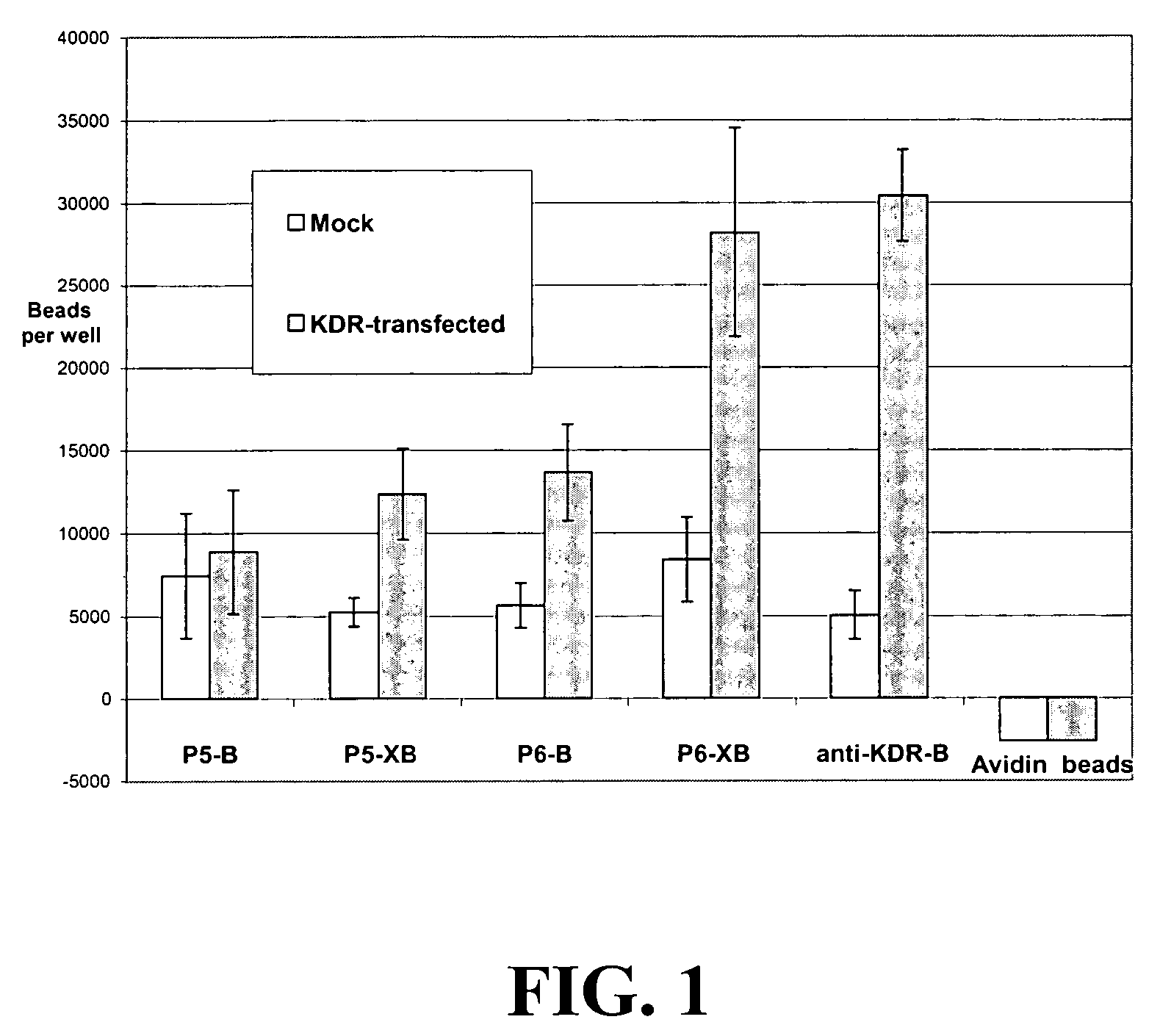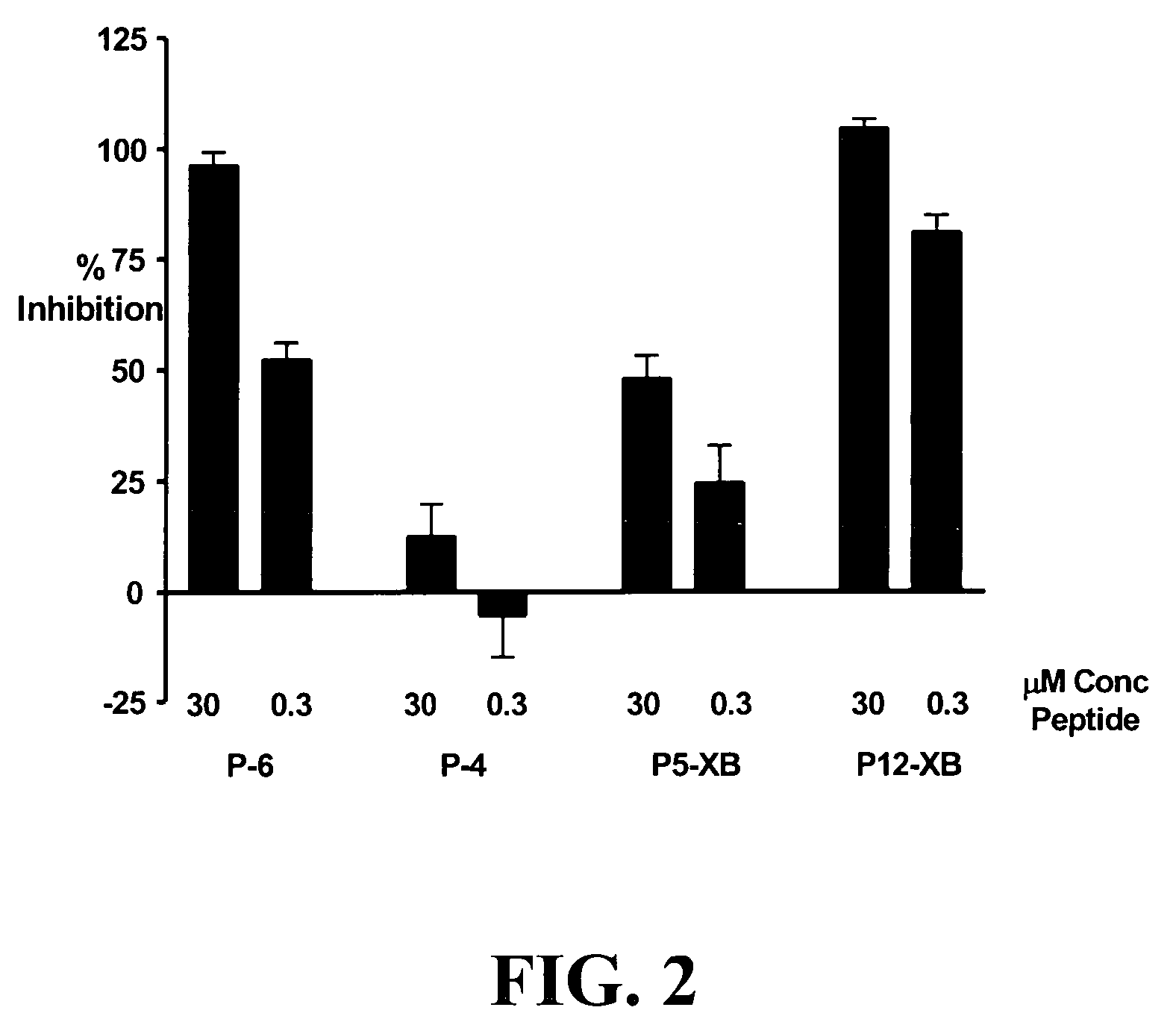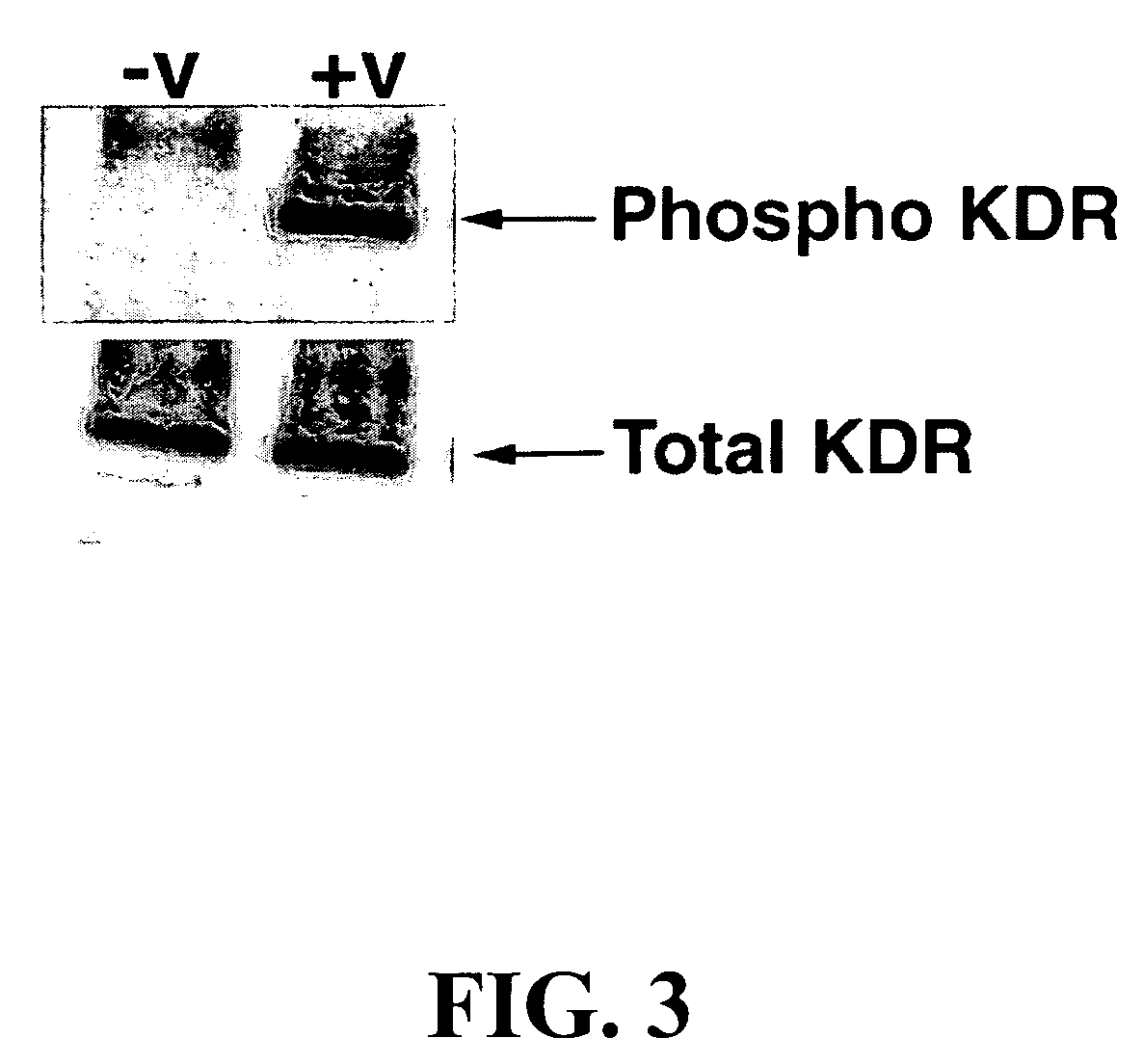Multivalent constructs for therapeutic and diagnostic applications
a multi-functional construct and construct technology, applied in the field of therapeutic and diagnostic applications, can solve the problems of unacceptable levels of antigenicity, natural antibodies are difficult to produce in recombinant form, natural antibodies also present pharmacokinetic problems, etc., to improve the ability to inhibit the function of receptor tyrosine kinase, improve the ability to bind the target molecule, and improve the effect of anti-aging
- Summary
- Abstract
- Description
- Claims
- Application Information
AI Technical Summary
Benefits of technology
Problems solved by technology
Method used
Image
Examples
example 1
Peptide Synthesis and Fluorescein Labelling
[0303]Selected KDR or VEGF / KDR binding peptides corresponding to positive phage isolates were synthesized on solid phase using 9-fluorenylmethoxycarbonyl protocols and purified by reverse phase chromatography. Peptide masses were confirmed by electrospray mass spectrometry, and peptides were quantified by absorbance at 280 nm. For synthesis, two N-terminal and two C-terminal amino acids from the phage vector sequence from which the peptide was excised were retained and a -Gly-Gly-Gly-Lys-NH2 linker was added to the C-terminus of each peptide. Peptides with selected lysine residues were protected with 1-(4,4-dimethyl-2,6-dioxocyclohex-1-ylidene)-3-methybutyl (ivDde), which allows selective coupling to the C-terminal lysine, is not removed during peptide cleavage, and can be removed after coupling with 2% hydrazine in DMF or 0.5 M hydroxylamine, pH 8, in water.
[0304]Each peptide was labeled with fluorescein on the C-terminal lysine using Fluo...
example 2
Bead-Binding Assay to Confirm Ability of Peptides Identified by Phase Display to Bind KDR-Expressing Cells
[0356]The following experiments were performed to assess the ability of KDR-binding peptides to bind to KDR-expressing cells. In this experiment, KDR-binding peptides P5-B and P5-XB and P6-B and P6-XB were conjugated to fluorescent beads and their ability to bind to KDR-expressing 293H cells was assessed. The experiments show that both peptide sequences can be used to bind particles such as beads to KDR-expressing sites. In general, the P6 peptides exhibited better binding to the KDR expressing cells than P5. However, the binding of both peptides improved with the addition of a spacer.
Biotinylation of an Anti-KDR Antibody
[0357]Anti-KDR from Sigma (V-9134), as ascites fluid, was biotinylated using a kit from Molecular Probes (F-6347) according to the manufacturer's instructions.
Preparation of Peptide-Conjugated Fluorescent Beads
[0358]0.1 mL of a 0.2 mM stock solution of each biot...
example 3
Competition of KDR Binding Peptides and 125I-Labeled VEGF for Binding to KDR-Transfected 293H Cells
[0363]The following experiment assesses the ability of KDR-binding peptides to compete with 125I-labeled VEGF for binding to KDR expressed by transfected 293H cells. While KDR-binding polypeptide P4 did not compete significantly with 125I-labeled VEGF, P5-XB, P6 and P12-XB competed very well with 125I-labeled VEGF, inhibiting 96.29±2.97% and 104.48±2.07% of 125I-labeled VEGF binding.
Transfection of 293H Cells
[0364]293H cells were transfected using the protocol described in Example 6. Transfection was done in black / clear 96-well plates (Becton Dickinson, cat. # 354640). The cells in one half of the plate (48 wells) were mock-transfected (with no DNA) and those in the other half of the plate were transfected with KDR cDNA. The cells were 80–90% confluent at the time of transfection and completely confluent the next day, at the time of the assay; otherwise the assay was aborted.
Preparatio...
PUM
| Property | Measurement | Unit |
|---|---|---|
| apparent molecular weight | aaaaa | aaaaa |
| dissociation constant | aaaaa | aaaaa |
| dissociation constant | aaaaa | aaaaa |
Abstract
Description
Claims
Application Information
 Login to View More
Login to View More - R&D
- Intellectual Property
- Life Sciences
- Materials
- Tech Scout
- Unparalleled Data Quality
- Higher Quality Content
- 60% Fewer Hallucinations
Browse by: Latest US Patents, China's latest patents, Technical Efficacy Thesaurus, Application Domain, Technology Topic, Popular Technical Reports.
© 2025 PatSnap. All rights reserved.Legal|Privacy policy|Modern Slavery Act Transparency Statement|Sitemap|About US| Contact US: help@patsnap.com



